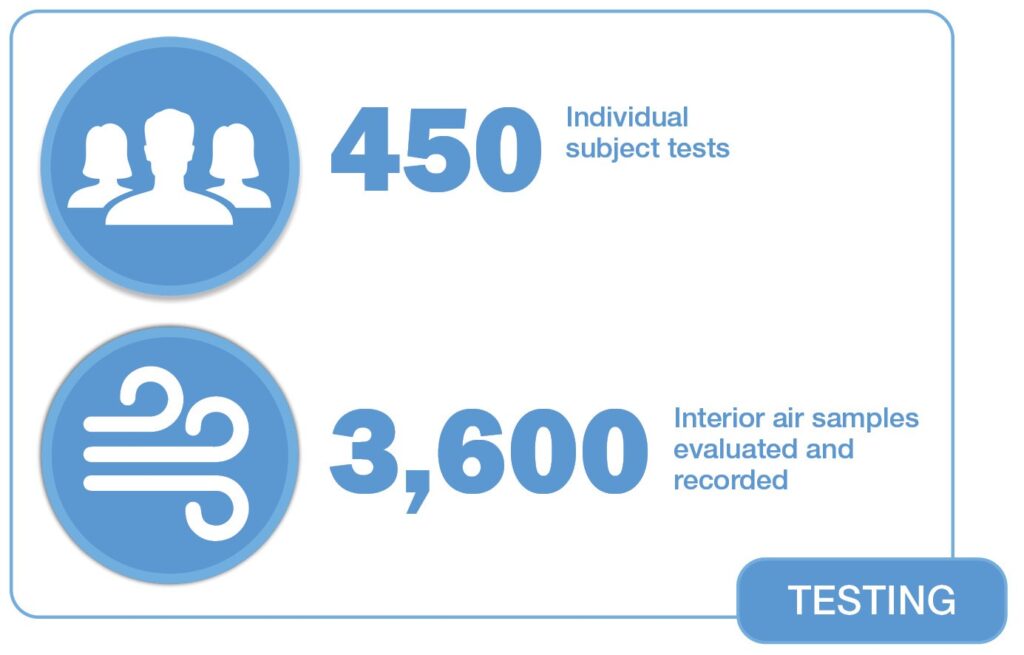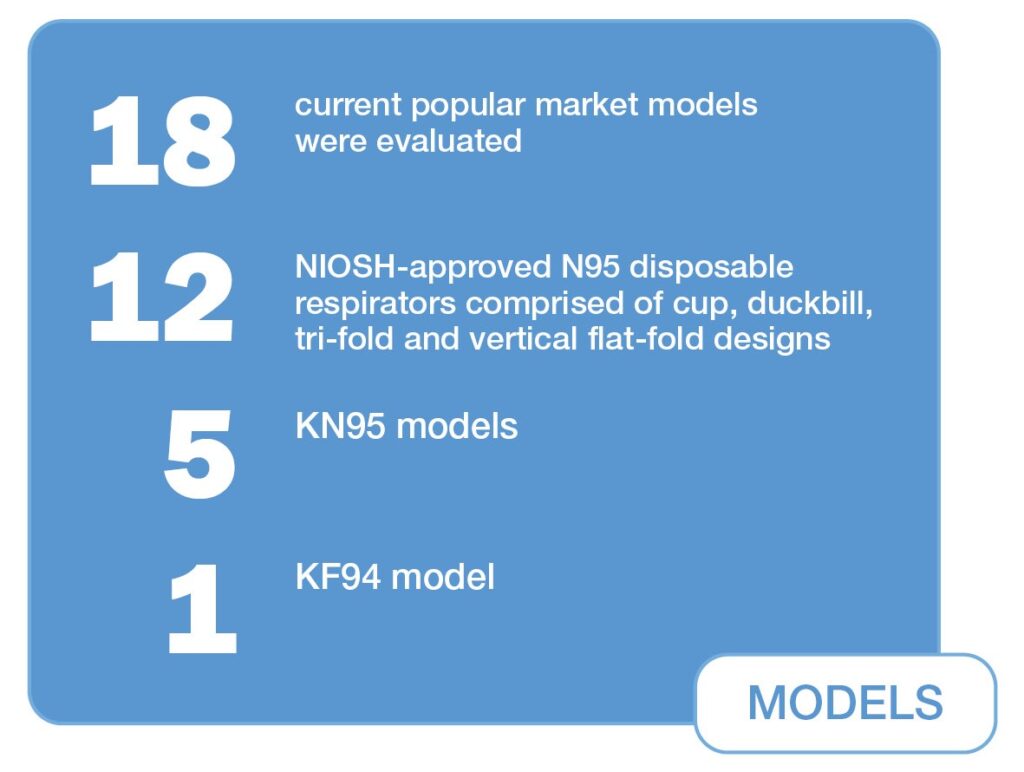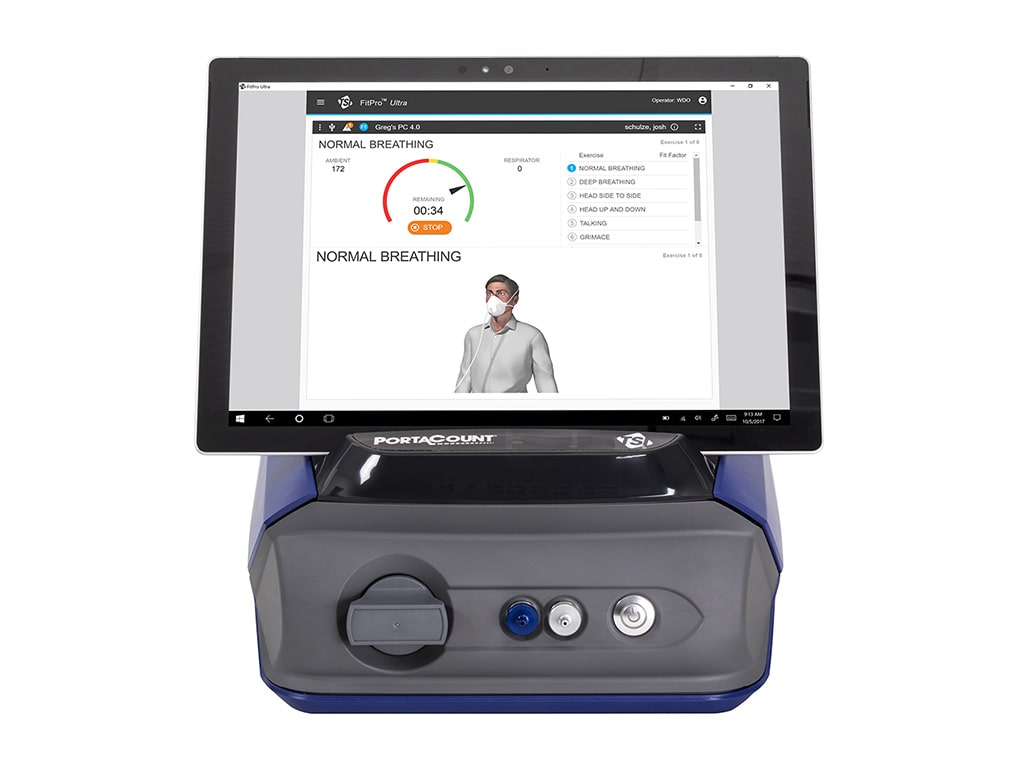The purpose of Shawmut’s comparison study was multi-fold, with an emphasis on assessing the ability of the ASTM F3407 Respirator Fit Capability (RFC) Standard to compare the fit capability performance of a range of several popular commercial, NIOSH-approved, disposable N95 filtering facepiece respirator (FFR) of various designs – molded cup, flat-fold, trifold and duckbill. A focus was also placed on understanding how FFR design and construction factors may impact overall fit performance, as well as assessing the relative performance of other popular FFR designs in the market at the time of the study compared to N95 FFR designs.
The comparison study included 450 individual subject tests and 3,600 interior air samples of 18 market models on a 25-person panel. The model lineup was comprised of 12 N95s, 5 KN95s and 1 KF94. The panel was comprised of 13 males and 12 females and selected in accordance with the NIOSH bivariate test panel, which is designed to be representative of the U.S. civilian workforce. The test panel was drawn from Shawmut’s local workforce and the make-up of the panel was held constant across all testing to the degree possible.


Test protocols followed the ASTM F3407-20 standard. The width (zygomatic arches) and length (menton-sellion length) of the test subjects’ faces were measured using a hexagon digital caliper and the average of the bizygomatic breadth and the menton-sellion length were identified with a panel number from the NIOSH panel. All test subjects were free of facial hair and other facial characteristics that would impact a proper fit and it was confirmed that all test subjects had not eaten or smoked within a half hour prior to the test. Each test subject was instructed on how to correctly don the FFR to achieve a good fit.
Using a TSI PortaCount Plus® Model 8048 in the N95 companion mode, each subject was tested following the OSHA 29CFR1910.134 protocol, which consists of eight exercises. The testing was conducted in a calibrated laboratory environment within a 72” x 72” x 98” enclosed area that was isolated from the outside air. Two TSI particle generators were run at the same time with a small fan to circulate and evenly distribute the particles and the particle count was maintained between 2000 – 8000 particles/cm3 and within ±10% of the initial particle count throughout the duration of the test. A diagnostic check was performed several times each day and included the chamber concentration, particle classifier check, zero check with manufacturer’s HEPA filter, and the Maximum Fit Factor check. Each facepiece was probed so that the opening was between the base of the nose and the mouth.
All test equipment was calibrated and traceable to NIST standards.

Overall, there were large differences between N95 designs tested in terms of fit capability and minimum levels of protection. Most N95s tested did not meet the fit capability standard (which calls for a minimum fit capability of 50% of the 25 panelists), and fit performance varied dramatically across individual N95 models. The study found that there is a great deal of variability in the fit of different respirator models across the panel. Some models performed consistently across subjects, while others performed inconsistently or poorly on most subjects. Of the 12 N95 models tested, only 3 passed the RFC standard. Two others fell 1 panel subject short of passing.
With regard to form factors, some styles seemed to be more robust than others, with cup designs performing better than duckbills and flat-folds. However, within each style there was still a great deal of variability in performance across subjects.
No KN95 mask passed a fit test on any individual in the comparison study panel. This indicates that KN95 masks do not perform well even with high-quality 95% filtration.
“The ASTM RFC Standard will enable respirator manufacturers to develop better designed models that fit the worker population. Respirators passing the RFC Standard test method are expected to have better fitting characteristics.” Said James Wyner. “Achieving high filtration is relatively easy; achieving a good seal in a mask that has high filtration is a challenge,” Wyner added. “That’s why evaluating how well a mask fits a wide range of people, in accordance with the ASTM F3407 standard, is so valuable.”
James Wyner, Shawmut CEO
